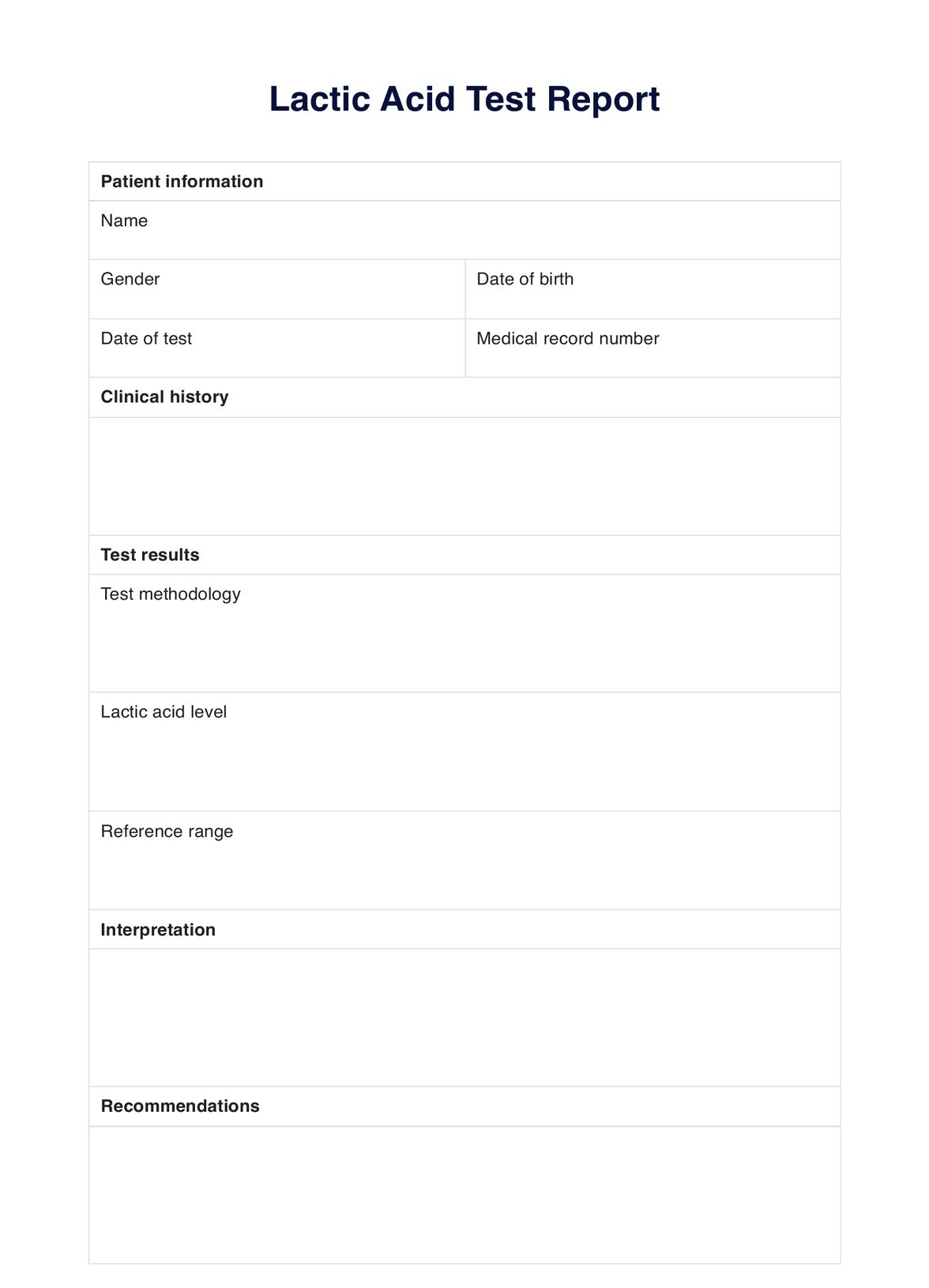Primary care physicians, emergency room doctors, and intensive care unit healthcare providers are among the most frequent requesters of Lactic Acid Tests. They may order this test for patients with certain underlying medical conditions or those experiencing symptoms such as shortness of breath, fatigue, nausea, or confusion.

Lactic Acid Test Reports
Get access to a Lactic Acid Test Report template for easy record-keeping. Learn more about Lactic Acid Tests and how to interpret test results.
Lactic Acid Test Reports Template
Commonly asked questions
Lactic Acid Tests are used to evaluate a patient's acid-base balance and can help diagnose various medical conditions. It is commonly performed in emergencies, including shock, sepsis, or heart attack. Lactic Acid Tests may also be ordered for patients with liver or kidney disease, certain types of cancer, or those undergoing treatment for HIV.
The Lactic Acid Test only takes a few minutes to perform. However, the total time from blood draw to results can vary depending on the testing facility's processes. Typically, it may take 30 minutes to a few hours for the results to be available.
EHR and practice management software
Get started for free
*No credit card required
Free
$0/usd
Unlimited clients
Telehealth
1GB of storage
Client portal text
Automated billing and online payments











